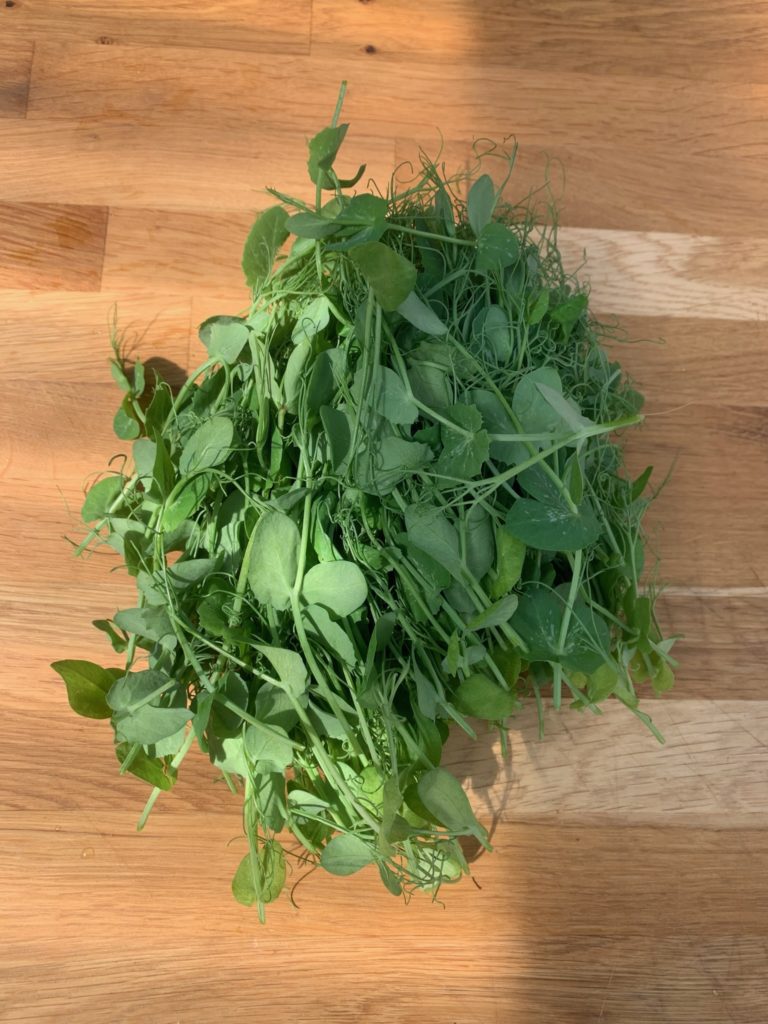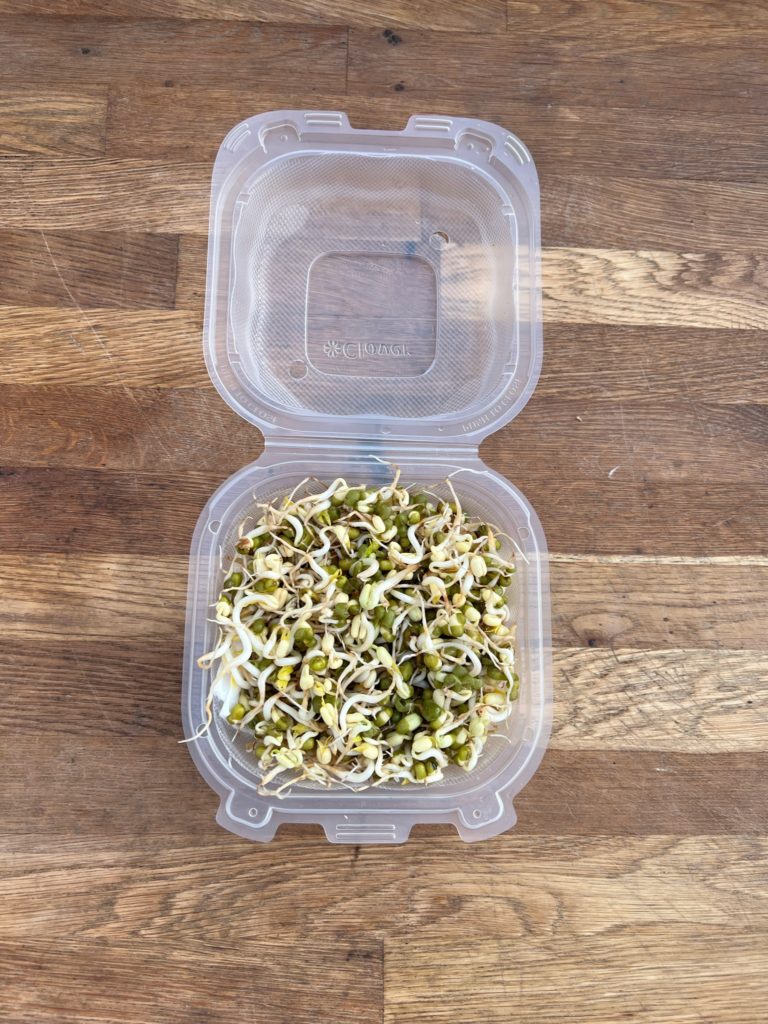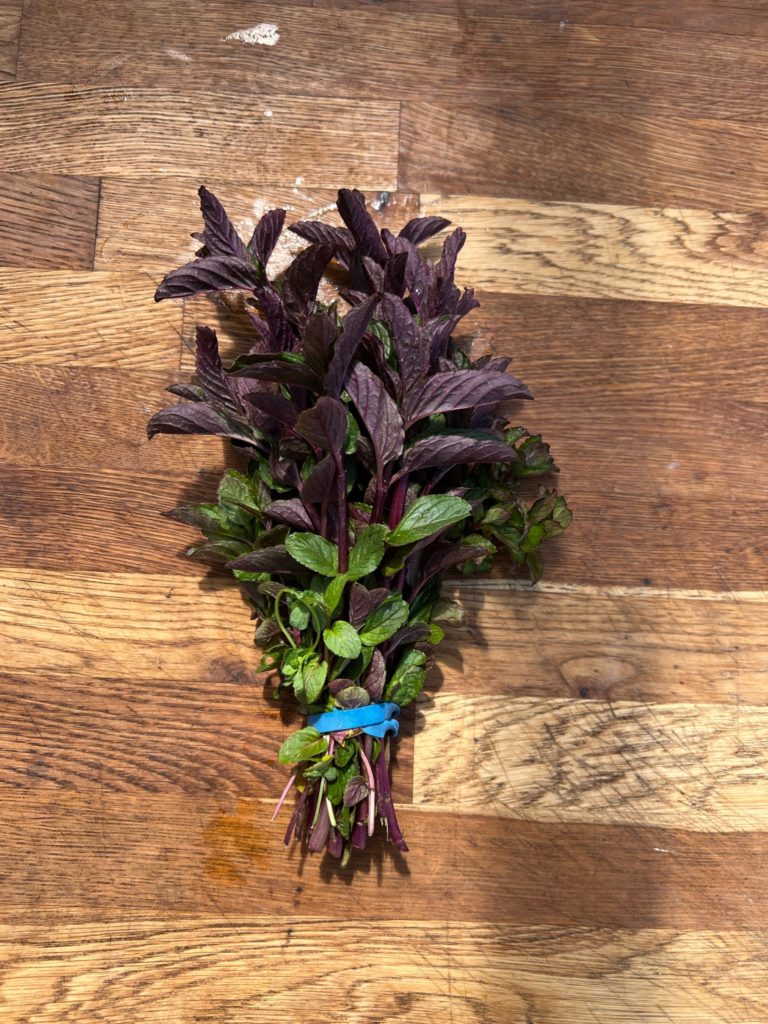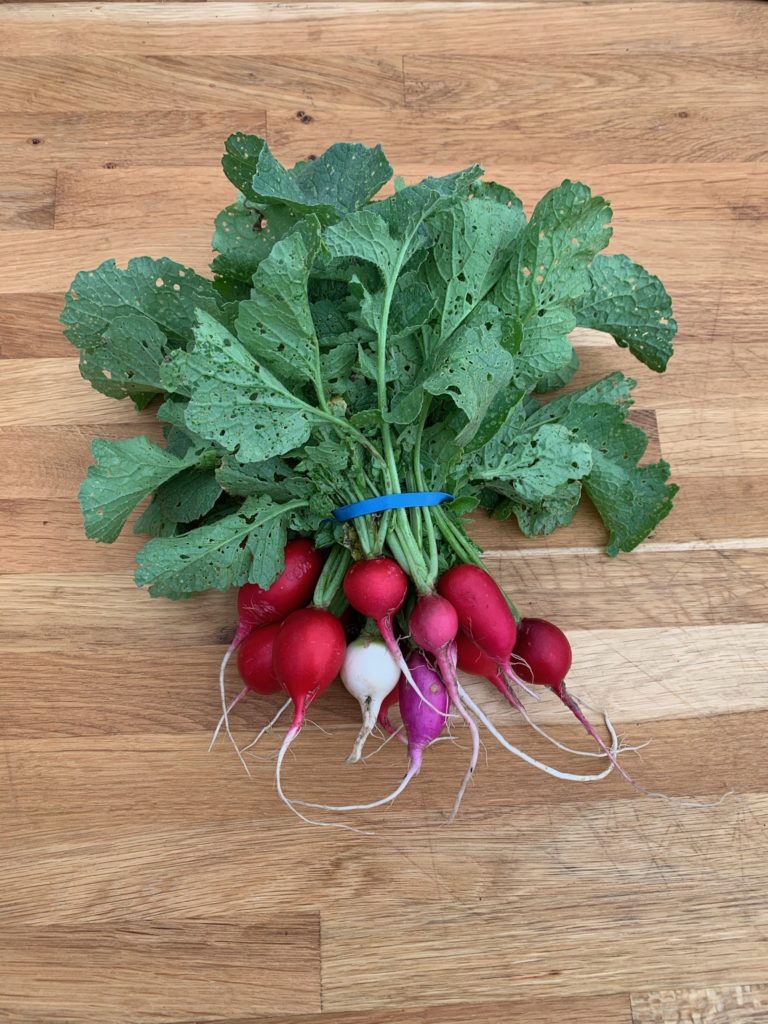

Note from Sarah. I have been without a computer for a few days and this post will need some editing but we wanted you to know what was in the box.
A note from Chris
The dry weather continues. My guess is this is it for the summer. I was looking at our journal from last year and on this week last year we had over 1.5 inches of rain that week and it was 50. While I’m glad we’re not that cold or wet this year it would be nice to have a bit more rain to help things get going and to reduce the risk of wildfires.
The hoophouse is filling up with produce! Our first zucchini are showing up in the hoop house and hopefully we will have enough to put in the boxes starting next week. There are small cucumbers and quite a few green tomatoes. Yay! Maybe tomatoes by 4th of July?
The pole beans and field cucumbers are planted and have come up. We had to setup the irrigation and replant some spots because there wasn’t enough moisture for the seeds to germinate.
We planted 200 sweet potato slips this week and are super excited. They are growing strong and look great. We have have tried to grow sweet potatoes the past 3 years. The first year someone stole them out of the mail, and probably just threw them on the side of the road. Then next year they arrived dead and crispy. Last year they grew but I didn’t irrigate properly and they didn’t develop. This year is the year! We’ve got the plastic down for heat and the drip irrigation line installed. So in theory we should be able to get around 200lbs if everything works out. 🤞
3rd round of corn is planted and our hope is to plant 2 more rounds that should hopefully be ready before it gets too cold this fall.
The cool weather crops didn’t do well but things look like there moving along fast this year for summer crops.

Pea tendrils, also known as pea shoots or pea sprouts, are young and tender tendrils that grow from the tops of pea plants. They are delicate, leafy greens with thin, curly stems and small, bright green leaves. The taste of pea tendrils is often described as mild and slightly sweet, with a subtle hint of the distinct flavor found in mature peas. The texture is tender and crisp, providing a pleasant crunch.
Rinse. The whole tendril is edible. Sometimes the stems get a little woody at the ends and can be removed. Eat raw or cooked.
It's best to use it within a few days for optimal flavor. To store it, place unwashed leaves in a perforated plastic bag or a container lined with a dry paper towel to absorb excess moisture. Seal the bag or container loosely to allow for some airflow. Store the bag in the refrigerator's crisper drawer, where it will stay fresh for a few days.

Lettuce, a leafy green vegetable, is known for its mild and refreshing taste. With its crisp texture and delicate flavor, lettuce offers a light and cooling sensation in the mouth. The leaves are often tender and slightly sweet, accompanied by a subtle hint of bitterness that adds depth to its overall taste.
Rinse. Remove leaves from the base, chop or add whole leaves. Eat raw or cooked. If the lettuce starts to wilt, you can revive it by soaking the leaves in ice water for a few minutes before patting them dry and using as desired.
It's best to use it within a few days for optimal flavor. To store it, place unwashed leaves in a bag or a container lined with a dry paper towel to absorb excess moisture. Seal the bag or container loosely to allow for some airflow. Store the bag in the refrigerator's crisper drawer, where it will stay fresh for a few days.
Freezing: While lettuce doesn't freeze well on its own, you can use the freezing method for preserving lettuce for cooked dishes or for making soups, stews, or smoothies. Blanche or steam the lettuce briefly, then cool it down quickly in ice water and pat dry before freezing in airtight containers or freezer bags.

Mung bean sprouts are, crisp, and crunchy sprouts that emerge from germinated mung beans. These sprouts are commonly used in various cuisines, particularly in Asian dishes. Mung bean sprouts have a delicate and mild flavor, with a slight nuttiness.
Rinse. Eat raw or cooked.
To store it, place unwashed sprouts in a container lined with a dry paper towel to absorb excess moisture. Seal the bag or container loosely to allow for some airflow. Store the bag in the refrigerator's crisper drawer, where it will stay fresh for a few days.

Mint is a fragrant herb known for its refreshing and cooling properties. It features vibrant green leaves that grow on square stems. Its taste is often described as fresh, aromatic, and mildly sweet with a subtle peppermint or spearmint flavor, depending on the variety. Mint is commonly used in both savory and sweet dishes, including salads, teas, cocktails, desserts, and as a garnish.
Rinse. Remove leaves from stems, chop or add whole leaves. Eat raw or cooked.
It's best to use it within a few days for optimal flavor. To store it, wrap the fresh mint in a damp paper towel and place it in a plastic bag. Store the bag in the refrigerator's crisper drawer, where it will stay fresh for a few days.

Radishes are small root vegetables known for their crisp texture and slightly peppery flavor. The flesh of radishes is typically firm, crunchy, and juicy, while the skin can range from smooth to slightly rough. They can be enjoyed raw as a snack, sliced and added to vegetable platters, or used as a garnish. Radishes also offer versatility in cooking, as they can be roasted, sautéed, or pickled to enhance their natural flavors. Rinse. Eat raw or cooked.
Remove greens for radishes. The leaves will continue to draw moisture from the root. Store the radishes and greens separately.
It's best to use the greens within a few days for optimal flavor. To store the greens, place unwashed leaves in a container lined with a dry paper towel to absorb excess moisture. Seal the container loosely to allow for some airflow. Store in the fridge. Here it will stay fresh for a few days.
Radish roots can keep for several weeks, sometimes even months, when stored in the fridge.
Rinse. The whole radish is edible, leaves and root. Eat raw or cooked. If the leaves start to wilt, you can revive them by soaking in ice water for a few minutes before patting them dry and using as desired.